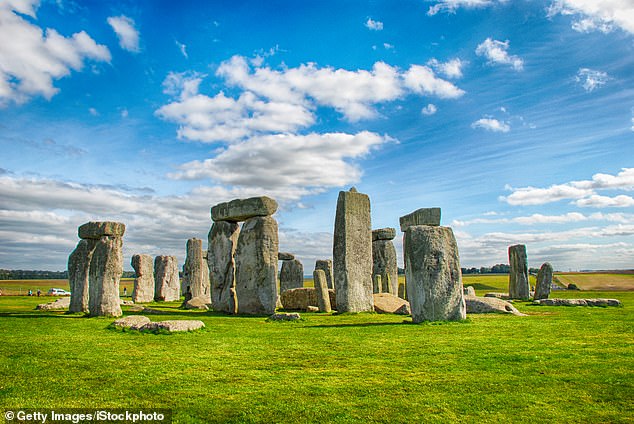Featured
- Get link
- X
- Other Apps
New Study Suggests: Ancient Britons Were Predominantly Black 5,000 Years Ago
A study indicates that the people behind the construction of the famous Stonehenge were likely African-descended individuals.
Scientists from the University of Ferrara have reconstructed data from 348 ancient genomes collected throughout Eurasia. Italy Which indicates that nearly all Europeans had dark skin up until approximately 3,000 years ago.
Near Stonehenge, which is just outside the town of Glastonbury , estimated to be built approximately 5,000 years ago, experts suggest we can infer that the constructors likely had dark complexions.
Up until about 1,700 years ago, most Europeans had dark complexions, according to the researchers. They also noted that many ancient Greeks and Romans as well as the Britons responsible for constructing Stonehenge possessed dark skin, eyes, and hair.
The research indicates that the transition towards lighter skin, due to population migration to higher latitudes and increased consumption of vitamin D, occurred at a pace that was considerably more gradual than earlier believed.
Experts are still unsure why the change from darker to light skin was so slow.
However, scientists believe farmers may have compensations for vitamin D deficiencies in their diet with accessible sources such as milk and meat.
Specimens for the research were collected from the British Isles and continental Europe. Russia , central Asia and the Middle East.



Dr. Silvia Ghirotto, an evolutionary biologist from the University of Ferrara in Italy, who headed the research, shared her insights. The Telegraph : 'By analysing ancient DNA from 348 individuals spanning 45,000 years, we reconstructed an intricate picture in which light pigmentation emerged sporadically during the first phases of our presence in Europe.
'Our ancestors had dark skin until very recent times.
'Given that Stonehenge was built during the transition from Neolithic to Bronze Age, and given the high frequency of dark-skinned samples we inferred for that period even in northern Europe, it is likely that Britons who built Stonehenge displayed dark features'.
Stonehenge is an iconic part of Britain's history. It is largely sealed off to the public, with visitors no longer being permitted to touch the stones, but they are able to walk around the monument from a short distance away.
The whole monument, now ruinous, is aligned towards the sunrise on the and sunset on the winter solstice.
Large crowds can usually be seen at the monument during the solstice periods as it is considered a place of worship to Neo-Druids, Pagans and other 'earth based' or 'old' religions.
English Heritage does, however, permit access during the summer and winter solstice, and the spring and autumn equinox.
Read more- Get link
- X
- Other Apps
Popular Posts
ABC Apologizes After Claudia Long Fabricates False Claims About Two High-Profile Politicians
- Get link
- X
- Other Apps
Tokyo Stocks Dip as Wall Street Suffers Losses
- Get link
- X
- Other Apps
Comments
Post a Comment